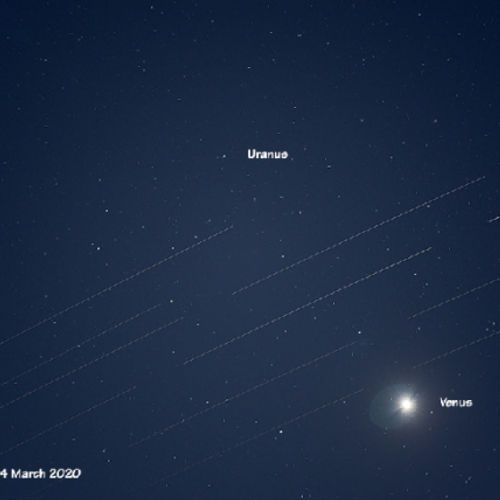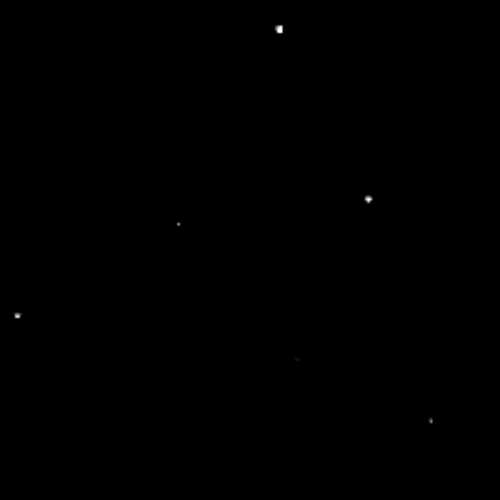| ID | #1584778076 |
| Added | Sat, 21/03/2020 |
| Author | July N. |
| Sources | |
| Phenomena | |
| Status | Result
|
| Resume |
Initial data
An eyewitness from the city of Huizen noticed in the sky about 15 strange objects:
Looked at the starry sky and saw movement. It was not a plane. They look like stars but they moved ... at about the same speed as the plane. Not a shooting star! There were 15 in less than a minute! Time, about 20.15
Translated by «Yandex.Translator»
Original news
HUIZEN, NH — Keken naar de sterren hemel en zag in ene van alles bewegen. Was geen vliegtuig. Zien er uit als sterren maar ze bewogen... ongeveer met de zelfde snelheid. Geen vallende ster! Stuk of 15 in nog geen minuut gezien! Tijd rond 20.15
Hypotheses
Satellite

Ordinary satellites, which often look like single, not very bright luminous dots moving smoothly in the night sky, are quite often mistaken for UFOs. After the Starlink satellites (near-Earth satellite systems developed by SpaceX, in order to create a cheap and high-performance satellite Internet communication channel and technical transmitters for receiving and transmitting signals from earth and orbit) were launched, it became possible to observe groups of satellites (up to 60 pieces) flying one after another.
Investigation
According to the website findstarlink.com in this location was observed in group Starlink-2, moving West to East from 19:53 on 20 March 2020.
Translated by «Yandex.Translator»
News: As satellites Starlink spoil astronomy

David Blanchard of Flagstaff city in the U.S. state of Arizona decided to capture the connection of Venus and Uranus in Aries March 4, but with the planets at the sudden got "star-bombing".
"During the exposure half a dozen Internet Starlink satellites flew between planets. At least one satellite broke and for a short time became one of the brightest objects in the sky brighter than it was only the Moon, Venus and, maybe, Sirius," said the photographer.
Resume
Satellite

Ordinary satellites, which often look like single, not very bright luminous dots moving smoothly in the night sky, are quite often mistaken for UFOs. After the Starlink satellites (near-Earth satellite systems developed by SpaceX, in order to create a cheap and high-performance satellite Internet communication channel and technical transmitters for receiving and transmitting signals from earth and orbit) were launched, it became possible to observe groups of satellites (up to 60 pieces) flying one after another.
Similar facts
Log in or register to post comments

